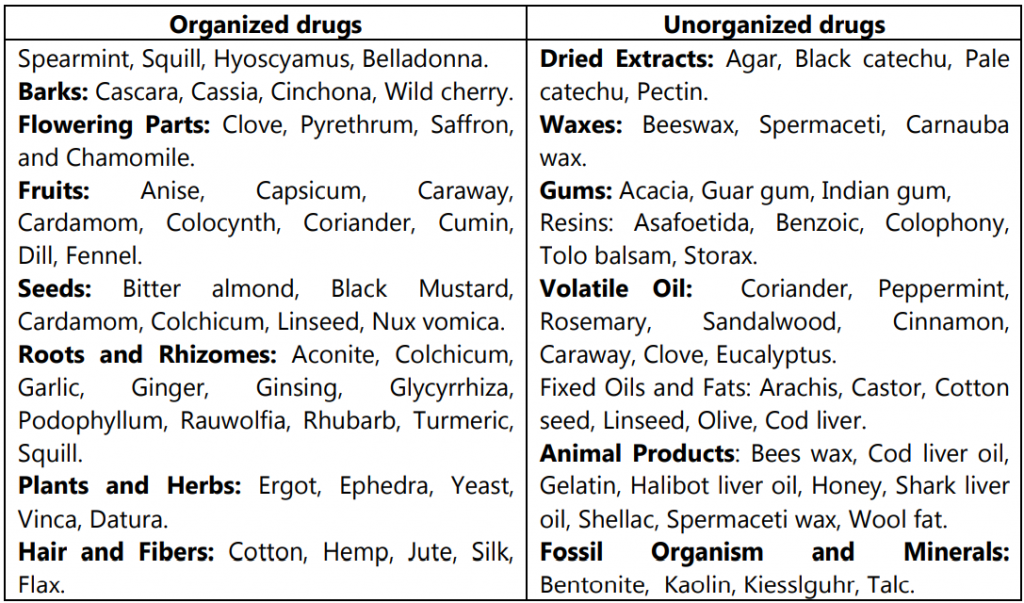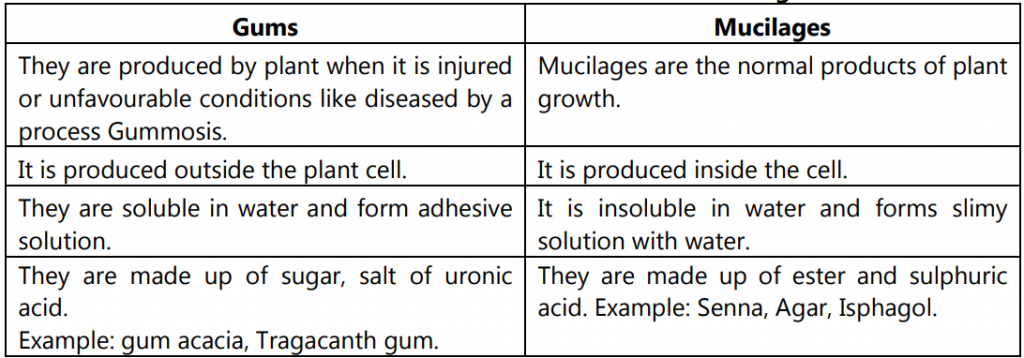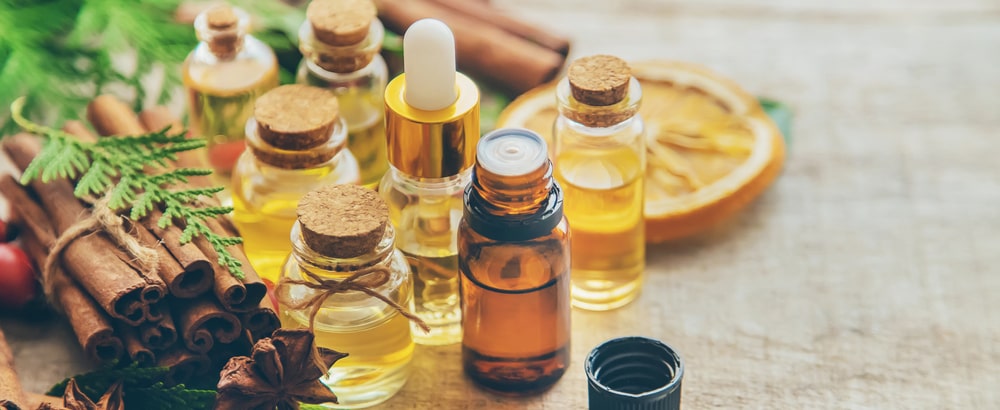Classification of Drugs: Alphabetical, morphological, taxonomical, chemical, pharmacological, chemo, and Sero-taxonomical classification of drugs.
In India, there are more than 17500 flowering plants, out of which 2000 plants are used in various classical systems of medicine like Ayurveda, Siddha, and Unani. Traditionally, about 8000 species of wild plants are used as medicine. The drugs used in the Indian System of Medicine are 90% based on plant material and are considered to be safe, cost-effective, and with minimal or no side effects when genuine ingredients are used. To follow the study of the individual drugs, one must adopt some particular sequence of arrangement, and this is referred to as a system of classification of drugs. A method of classification should be simple, easy to use; and free from confusion and ambiguities. Due to diversity, drugs are classified as:
- Alphabetical classification.
- Morphological classification.
- Taxonomic classification.
- Pharmacological classification.
- Chemical classification.
- Chemo-taxonomical classification.
- Sero-taxonomical classification

Alphabetical Classification
Table of Contents
This classification provides an arrangement of crude drugs in alphabetical order of their Latin and English names or sometimes local names. This method is adopted in many books like Indian Pharmacopoeia, British Pharmacopoeia, United States Pharmacopoeia, and National Formulary, British Herbal Pharmacopoeia, British Pharmaceutical Codex, European Pharmacopoeia (Latin Titles), Encyclopedia of common natural ingredients used in Drugs and cosmetics. In Indian Pharmacopoeia 1966 names changed to English as Amylum changed to starch, Acacia gum changed to Indian gum, etc.
Example: Acacia, Benzoin, Cinchona, Dill, Ergot, Fennel, Gentian, Hyoscyamus, Ipecacuanha, Jalap, Kurchi, Liquorice, Myrrh, Nux-Vomica, Opium, Podophyllum, Quassia, Rauwolfia, Senna, Uncaria Gambier, Vasaka, Wool Fat, Yellow Bees Wax, Zedoary.
Advantages:
- This method provides a quick reference search of the crude drugs.
- The study of drugs by this method is easy once the name of the drug is known.
- In this system location, tracing and addition of drug entries are easy.
Disadvantage:
- There is no relationship between the previous and successive drug entries.
Morphological Classification
All crude drugs are arranged according to the external characters of the plant or animal parts i.e., leaves, roots, stems, flowers from plants, etc. This class of drug is further classified as an organized and unorganized drug. The organized drugs are obtained from the cellular tissues and dried parts of the plants like Rhizomes, barks, leaves, fruits, entire plants, hairs, fibers, etc. The plant drugs are prepared by some intermediate physical processes like incision, drying, or extraction with a solvent and some do not contain any cellular plant tissues which are called unorganized drugs, e.g., aloe juice, opium latex, agar, gelatin, tragacanth, benzoin, honey, beeswax, lemongrass oil, etc. The differences are given in table.1.
Table 1: Differences between Organized and Unorganized Crude Drugs


Gum and Mucilage:
Gums containing crude drugs are amorphous substances, pathological products produced by the plants under injured or unfavorable conditions.
Mucilages are thick, gluey substances produced from plants and some microorganisms. The differences between gums and mucilages are given in table 2.
Table 2: Differences between Gums and Mucilages

Advantages:
- An easy method to study plant drugs.
- Even if the chemical content or action of the drug is not known the drug can be studied properly.
- It gives an idea about the source of drugs.
- It gives an idea of whether it is organized or unorganized.
- Easy to identify and detect adulteration.
Disadvantages:
- During collection, drying, and packing, the morphology of drug changes; are difficult to study.
- No correlation between chemical constituents with therapeutic actions.
- Repetition of drugs or plants occurs.
Taxonomical Classification
This is the systematic naming of organisms into similar groups. Plant taxonomy uses the gross morphology like flower form, leaf shape, fruit form, etc. of plants to separate them into similar groups. Quite often the characteristics that distinguish the plants become a part of their name. For example, a white oak (Quercus alba) is named because of the white leaf. Taxonomical classification is purely a botanical classification; it is based on principles of the natural relationship and evolutionary developments. They are grouped in Kingdom, Phylum, Order, Family, Genus, and Species. The entire plant is not used as a drug; only a part of the plant is used as a drug. E.g. cinnamon bark. It is classified scientifically as follows:
- Kingdom: Plantae
- Division: Magnoliophyta
- Order: Proteales
- Family: Proteaceae
- Subfamily: Grevilleoideae
- Genus: Telopea
- Species: Speciosissima
Taxonomists classify two species together in the same genus (the plural is genera). For example, the horse Equus caballus and the donkey Equus casinos are both placed in the genus Equus. Similar genera are brought together to form a family. Similar families are classified within an order. Orders with similar characteristics are grouped in a class. Related classes are grouped as divisions or phyla (the singular is phylum). For plants and fungi, divisions are used while phyla are used for animals and animal-like organisms. The largest and broadest category is the kingdom.
Examples:
- Phylum: Spermatophyta
- Division: Angiospermae
- Class: Dicotyledons
- Order: Rosales
- Family: Leguminosae
- Sub-family: Papilionaceae
- Genus: Glycyrrhiza, Astragalus, Myroxylon
- Species: Glycyrrhiza glabra, Astragalus gummier, Myroxylon balsamum
- Phylum: Spermatophyta
- Division: Angiospermae
- Class: Dicotyledons
- Sub-class: Sympetalae
- Order: Tubiflorae
- Family: Solanaceae
- Genus: Atropa, Hyoscyamus, Datura
- Species: Atropa belladona, Hyoscyamus niger, Datura stramonium
Advantages:
- Knowledge about taxonomical details will give a proper idea about species and varieties of the organisms.
- It helps study evolutionary developments of crude drugs.
Disadvantages:
- No idea about organized/unorganized.
- No idea about chemical nature.
- No correlation between the chemical constituents and biological activity of drugs.
Pharmacological Classification
System in which the drugs are grouped according to their pharmacological action or most important constituent or their therapeutic use is termed as pharmacological or therapeutic classification of drug. This classification is a more relevant and mostly followed method. Drugs like digitalis, squill and strophanthus having cardiotonic action are grouped irrespective of their parts used or phylogenetic relationship or the nature of phytoconstituents they contain. Hence as per pharmacological actions, various drugs are classified into the same action (Table 3).
Table 3: Classification of various drugs as per pharmacological action

Advantages:
- It is easy to study the drug based on pharmacological activity.
- If the drugs are not available at a particular place or point of time, based on activity substitutes of drugs may possible.
Disadvantages:
- Some crude drugs have two different pharmacological actions, therefore it is difficult to classify them. For example, Nux-vomica is a CNS stimulant as well as a bitter tonic, cinchona is a bitter tonic as well as antimalarial and antipyretic.
- Drugs that have a different mechanism of action have to be grouped. e.g. castor oil is irritant purgative and isapgol is bulk purgative, but they are placed in one group.
- No idea whether drugs are organized or unorganized.
- This method does not give any idea of the source of drugs.
Chemical Classification
The crude drugs are divided into different groups according to the chemical nature of their most important constituent. The pharmacological activity and therapeutic significance of crude chemical classification of drugs are dependent upon the grouping of drugs with identical constituents. The classification is as follows:
(a) Carbohydrates: Carbohydrates are polyhydroxy aldehydes or ketones containing an unbroken chain of carbon atoms.
Examples: Gums – Acacia, Tragacanth.
Mucilages – Plantago seed, others – Starch, Honey, Agar, Pectin, Cotton.
(b) Glycosides: Glycosides are compounds which upon hydrolysis give rise to one or more sugars (glycone) and non–sugar (aglycone).
- Anthraquinone Glycosides: Senna, Aloe, Cascara, Rhubarb etc.
- Saponins Glycosides: Quillaia, Glycyrrhiza;
- Cyanophore Glycosides: Wild cherry bark,
- Isothiocyanate Glycosides: Mustard,
- Cardiac Glycosides: Digitalis, Strophantus,
- Bitter Glycosides: Gentian, Calumba, Quassia
(c) Tannins: Tannins are complex organic, non–nitrogenous derivatives of polyhydroxy benzoic acids. Examples: Pale catechu, Black catechu, Ashoka bark, Amla
(d) Volatile Oils: Monoterpenes and Sesquiterpenes obtained from plants.
Examples: Cinnamon, Fennel, Dill, Caraway, Coriander, Cardamom, Orange peel, Mint, Clove, Valerian.
(e) Lipids: Fixed oils – Castor, Olive, Almond, Shark liver oil. Fats: Theobroma, Lanolin. Waxes: Beeswax.
(f) Resins: Complex mixture of compounds like resinous, resin acids, resinotannols, resenes.
Examples: Colophony, Podophyllum, Cannabis, Capsicum, Turmeric, Balsam of Tolu and Peru, Myrrh, Ginger.
(g) Alkaloids: Nitrogenous substance of plant origin;
- Pyridine and Piperidine: Lobelia, Nicotiana;
- Tropane – Coca, Belladonna, Datura, Stramonium, Hyoscyamus, Henbane.
- Quinoline – Cinchona;
- Isoquinoline – Opium, Ipecac, Calumba,
- Indole – Ergot, Rauwolfia.
- Amines – Ephedra,
- Purine – Tea, Coffee,
- Protein – Gelatin, Ficin, Papain.
Advantages:
- If the chemical constituent is known then it is easy to study the drug.
- It is a popular approach for phytochemical studies.
- Medical uses are known.
Disadvantages:
- This method does not give any idea about the source of the drug.
- Some drugs contain two important chemicals so it is difficult to classify them. For example, nutmeg contains volatile oil as well as fat; Cinchona contains glycoside as well as an alkaloid.
- No idea whether a drug is organized or unorganized.
Chemo-taxonomical Classification
This system of classification relies on the chemical similarity of taxon i.e., it is based on the existence of a relationship between constituents in various plants. This gives birth to a completely new concept of chemotaxonomy that utilizes chemical facts/characters for understanding the taxonomical status, relationships, and evolution of the plants. Generally, tropane alkaloids belong to the members of Solanaceae, thereby serving as a Chemotaxonomic marker. Similarly, plant metabolites can serve as the basis of the classification of crude drugs. The berberine alkaloid in Berberis and Argemone; Rutin in Rutaceae members, ranunculaceous alkaloids among its members, etc. are examples. It is the latest system of classification and gives more scope for understanding the relationship between chemical constituents, their biosynthesis, and their possible action.
Basic Principle: It consists of the investigation of the distribution of chemical compounds or groups of biosynthetically related compounds in a series of related plants.
Classifications:
(a) Bentham and Hooker’s (1817-1911) classification: They adopted a comprehensive natural system of classification in their published work “General Plantarum” which dominated botanical science. According to this system, the plant kingdom comprises about 97205 species of seed plants which are distributed in 202 orders that are further divided into families. Dicots have been divided into three divisions based on floral characters viz., polypetalous, gamopetalous and monochlamydeae.
(b) Engler’s (1844-1930) classification: This is a natural system of classification which is based on the relationship and is compatible with evolutionary principles. He has published his system of classification in “Die Naturlichen Pflanzenfamilien” in 23 volumes, covering the whole plant kingdom. The increasing complexity of the flowers is considered for classification.
(c) Hutchinson’s system of classification: He has published his work “The families of flowering plants” in 1926 on dicots and in 1934 on monocots. He has further revised this system in 1959 and as per that he placed the Gymnosperm first, then the Dicots, and lastly Monocots. This system indicates the concept of phylogenetic classification and is an advanced system over Bentham and Hooker’s system.
(d) Modern system of classification: It is based on ultrastructure chromosomal information using higher microscopes like the electron microscope, scanning electron microscope, etc. In this system, the genetic and phylogenetic relationship was reflected and divided into broadly two groups viz. macromolecules and macromolecules. Micromolecules are compounds with a molecular weight of less than 1000 e.g., alkaloids, terpenoids, fatty acids, amino acids, simple carbohydrates, etc. Macromolecules are compounds with a molecular weight of 1000 or more, e.g., complex polysaccharides, proteins, DNA, RNA, etc. In this system, Serotaxonomy is gaining importance.
Advantages:
- It gives more scope for understanding the relationship between chemical constituents, their biosynthesis, and their possible action.
- The characters most often studied are secondary metabolites of pharmaceutical significance such as alkaloids, glycosides, flavonoids, DNA hybridization, amino acid sequencing in proteins, etc.
- It provides a degree of hybridization and breeding analysis.
Disadvantages:
- This system is failing to identify the organized and unorganized crude drugs in their morphological studies.
- This system fails to understand the therapeutic nature of the crude drugs.

Serotaxonomic Classification
Serotaxonomy is the application of serology, serology is the study of antigen and antibody reactions. Therefore, Serotaxonomy is the experimentation of antigens and antibodies. These experiments are mostly done with plants. In the immune system, a specific protein molecule produced by the plasma cell is known as an antibody. These antibodies combine chemically with specific antigens and in combination elevate an immune response. The application of serology in solving taxonomic problems is known as Serotaxonomy.
The main importance of serological data is used to classify angiosperms. Examples:
- Fairbrothers (1983) used serological data in the classification of orders and families in Apiales, Fagales, Rubiales, Magnoliales, Ranunculales, etc.
- Fairbrothers and Jhonson separated six species of Bromus based on the serological data in 1959.
- The relationship between Nymphaeaceae and Nelumbonaceae based on serological data was established by Simon (1971).
- Klos applied Serotaxonomic data in the classification of Leguminosae.
Advantages:
- The size of the data used in molecular taxonomy studies is enormous.
- The analysis of the cladograms is done using statistical methods.
- If the molecule is unchanged (Like genes coding for ribosomal RNA), the relationships are traced far back in time.
- Non-heritable variations are avoided in molecular taxonomy studies.
Disadvantages:
- There is no record of past changes in characters.
- There is no familiar intermediate condition between characters and no primitive condition for a given DNA site is recognized.
- The tracing of functional correlates of characters is very rare.
- It is very difficult indeed to root a tree derived from molecules. Moreover, the likelihood of convergence is usually impossible.
Make sure you also check our other amazing Article on : Sources of Drugs
